
While Philadelphia offers plenty of services and amenities to her citizens, the neighborhood of Belmont-Mantua has access to little. Although parks, recreations, universities, and public transportations are tantalizingly close, physical and social barriers separate them from the neighborhood.
Photo Credit: Fatemeh Saeidi-Rizi (Vision Design / Perspective Specialist)
Media: Please submit high-resolution image requests to images@asla.org.
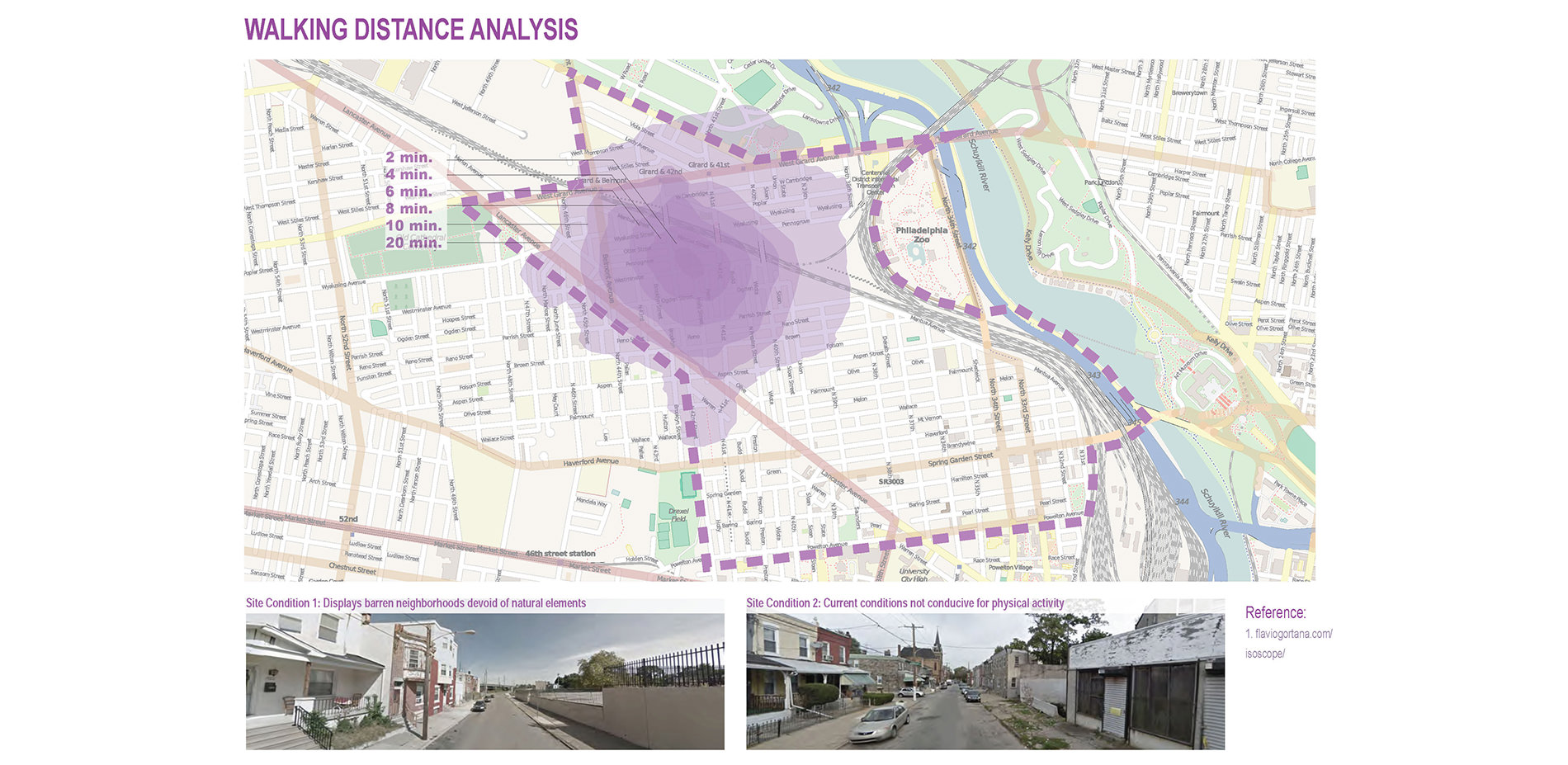
Walking may not be the most attractive thing in Mantua-Belmont neighborhood. After all, where do people walk to? The lack of destination, the unattractiveness of the streets, and the decreasing perception of safety has emptied the street and sidewalks.
Photo Credit: Fatemeh Saeidi-Rizi (Vision Design / Perspective Specialist)
Media: Please submit high-resolution image requests to images@asla.org.
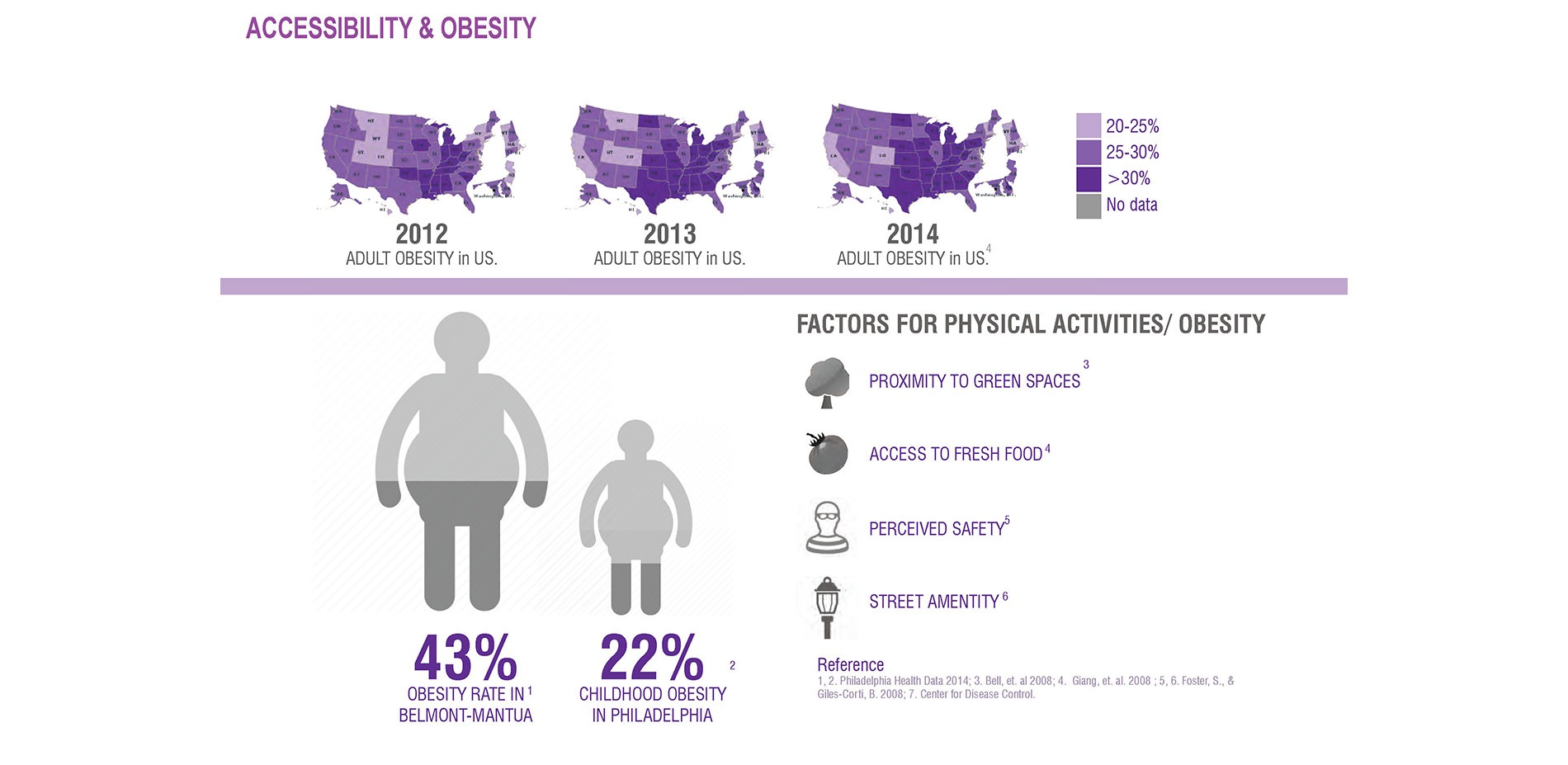
The lack of physical activity links to an alarming issue: obesity. Obesity is expanding across the US. This condition is partially caused by sedentary lifestyle and poor diet. Increasing physical activity opportunities and access to fresh food help combat obesity.
Photo Credit: Fatemeh Saeidi-Rizi (Vision Design / Perspective Specialist)
Media: Please submit high-resolution image requests to images@asla.org.

Dissolving the boundaries between public and private may be a way to make community health flourish. This task requires physical settings to act as catalysts to create social bonds from homes to front/side yards to community parks.
Photo Credit: Fatemeh Saeidi-Rizi (Vision Design / Perspective Specialist)
Media: Please submit high-resolution image requests to images@asla.org.

We tackled this issue through guided grassroots interventions. Citizens should help create the streets, locations, and neighborhoods ideal to their desires. We introduced the concept of SEED: the collaborative community hub for a customizable neighborhood.
Photo Credit: Fatemeh Saeidi-Rizi (Vision Design / Perspective Specialist)
Media: Please submit high-resolution image requests to images@asla.org.
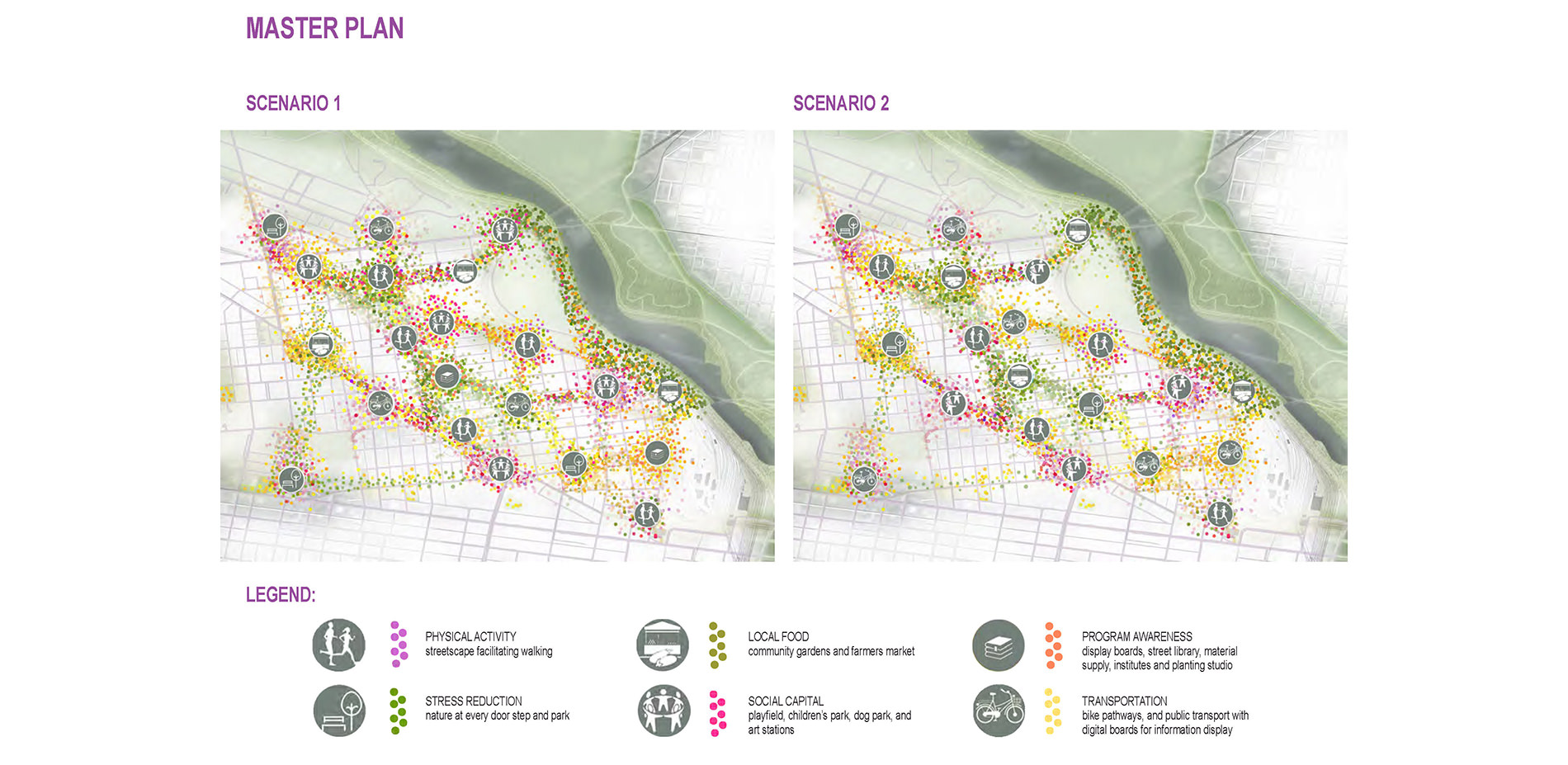
We carefully analyzed the locations where we could use as SEEDs locations. These hubs would be transformed into the space based on citizens’ survey. People close to a SEED would get to vote for its function. The possibilities are endless.
Photo Credit: Fatemeh Saeidi-Rizi (Vision Design / Perspective Specialist)
Media: Please submit high-resolution image requests to images@asla.org.

In this flexible planning, we embrace unexpected technological advancement. By the time the design is implemented, the world may unfold new paradigm of how people interact with the public realm. We are ready for drones, driverless electric cars, and more.
Photo Credit: Fatemeh Saeidi-Rizi (Vision Design / Perspective Specialist)
Media: Please submit high-resolution image requests to images@asla.org.
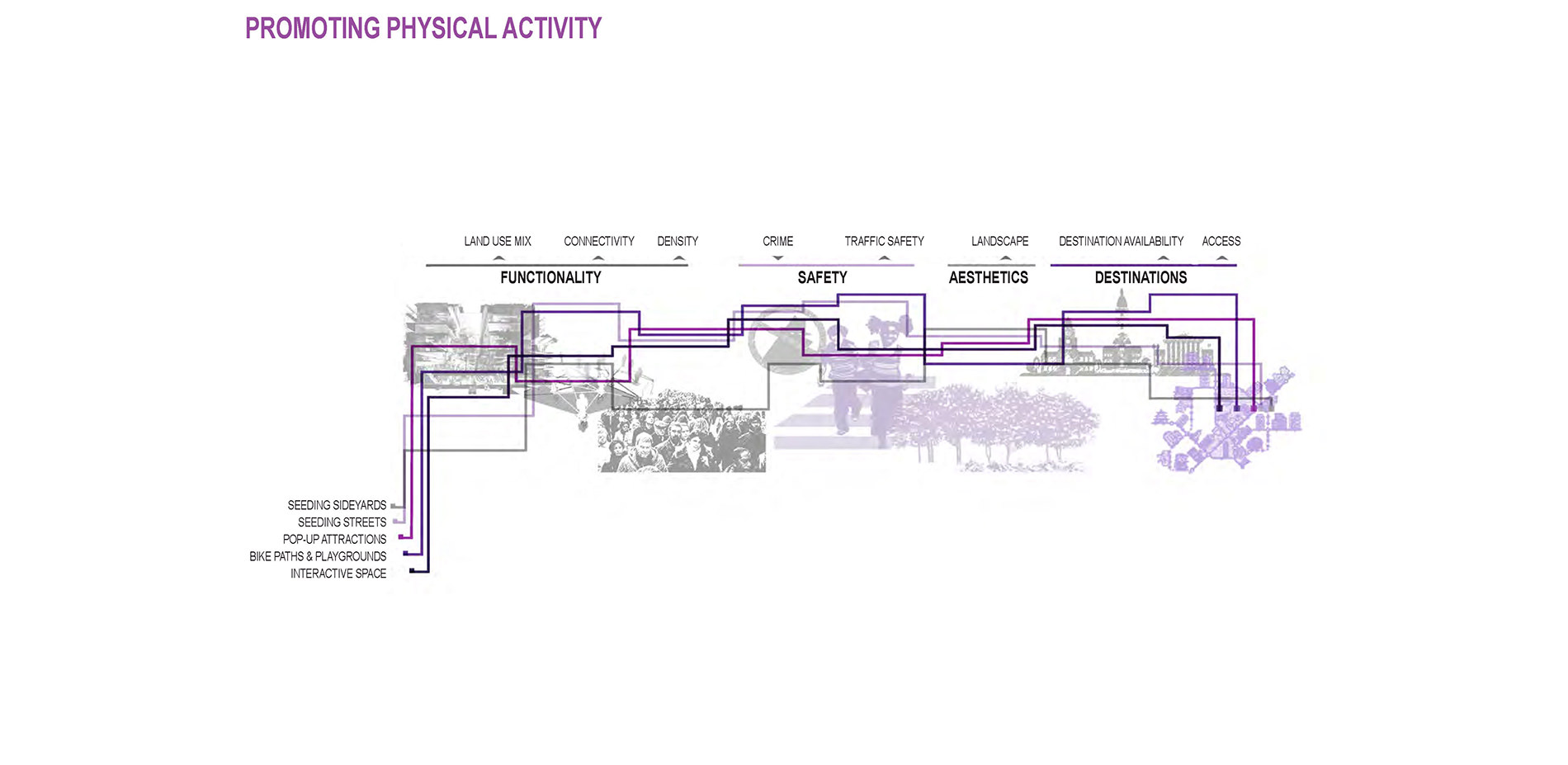
Aside from the SEEDs, we investigated street infrastructure and private open spaces to create a walkable experience throughout the neighborhood. We incorporated elements of successful walking streets: attractive destinations, safety, aesthetic, and functions into our plan.
Photo Credit: Fatemeh Saeidi-Rizi (Vision Design / Perspective Specialist)
Media: Please submit high-resolution image requests to images@asla.org.

With this customizable design and ever-growing points of interest, every walking route introduces a brand new experience. Such sense of exploration can invite anyone in the neighborhood to spend time outdoor and crafting their endless adventures.
Photo Credit: Fatemeh Saeidi-Rizi (Vision Design / Perspective Specialist)
Media: Please submit high-resolution image requests to images@asla.org.
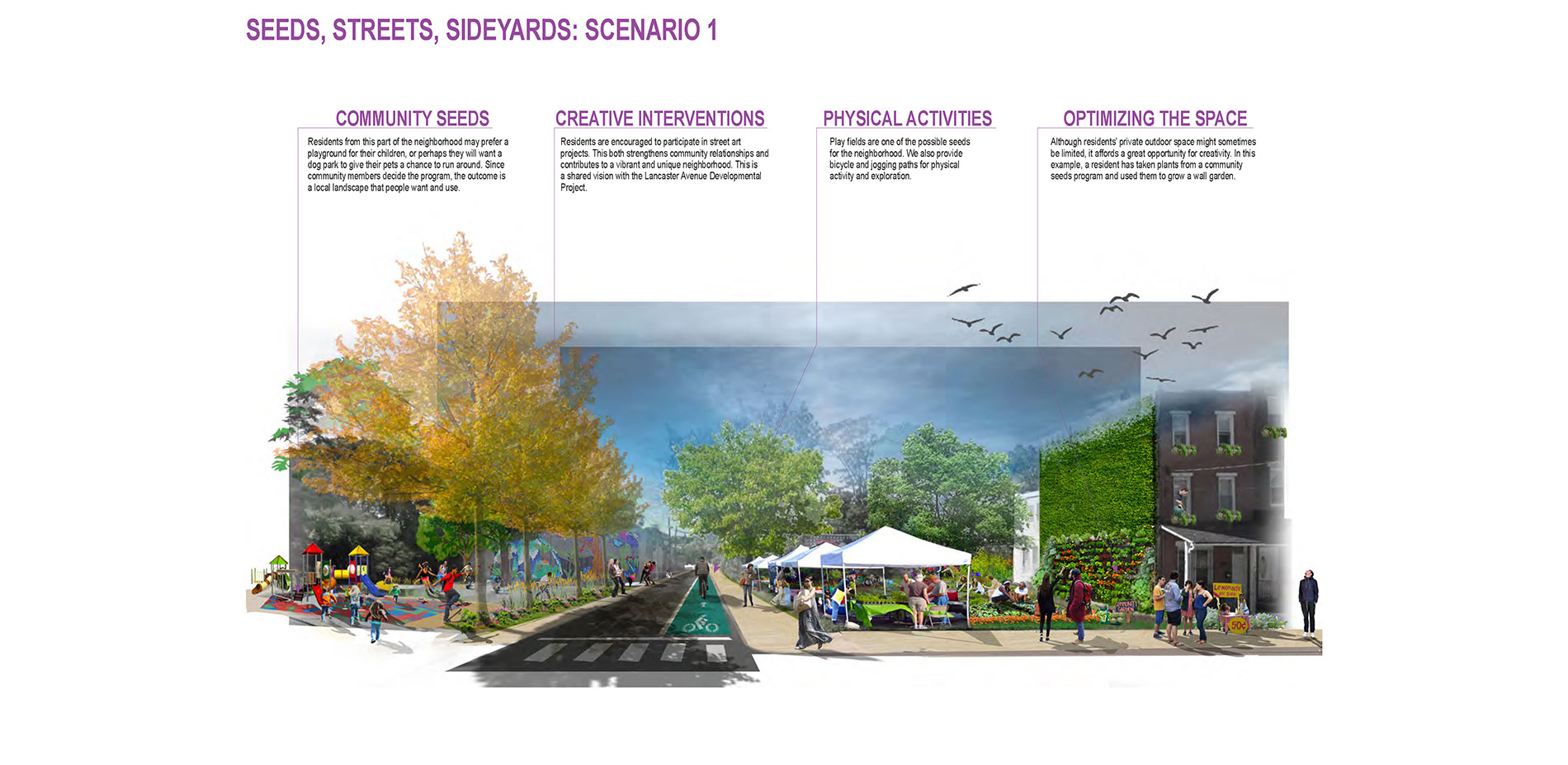
Our design leads to endless possibilities. A weedy street corner can transform into a community garden with a playground across the street. Children can play while the parents shop, trusting the eyes on the street to keep their children safe.
Photo Credit: Fatemeh Saeidi-Rizi (Vision Design / Perspective Specialist)
Media: Please submit high-resolution image requests to images@asla.org.
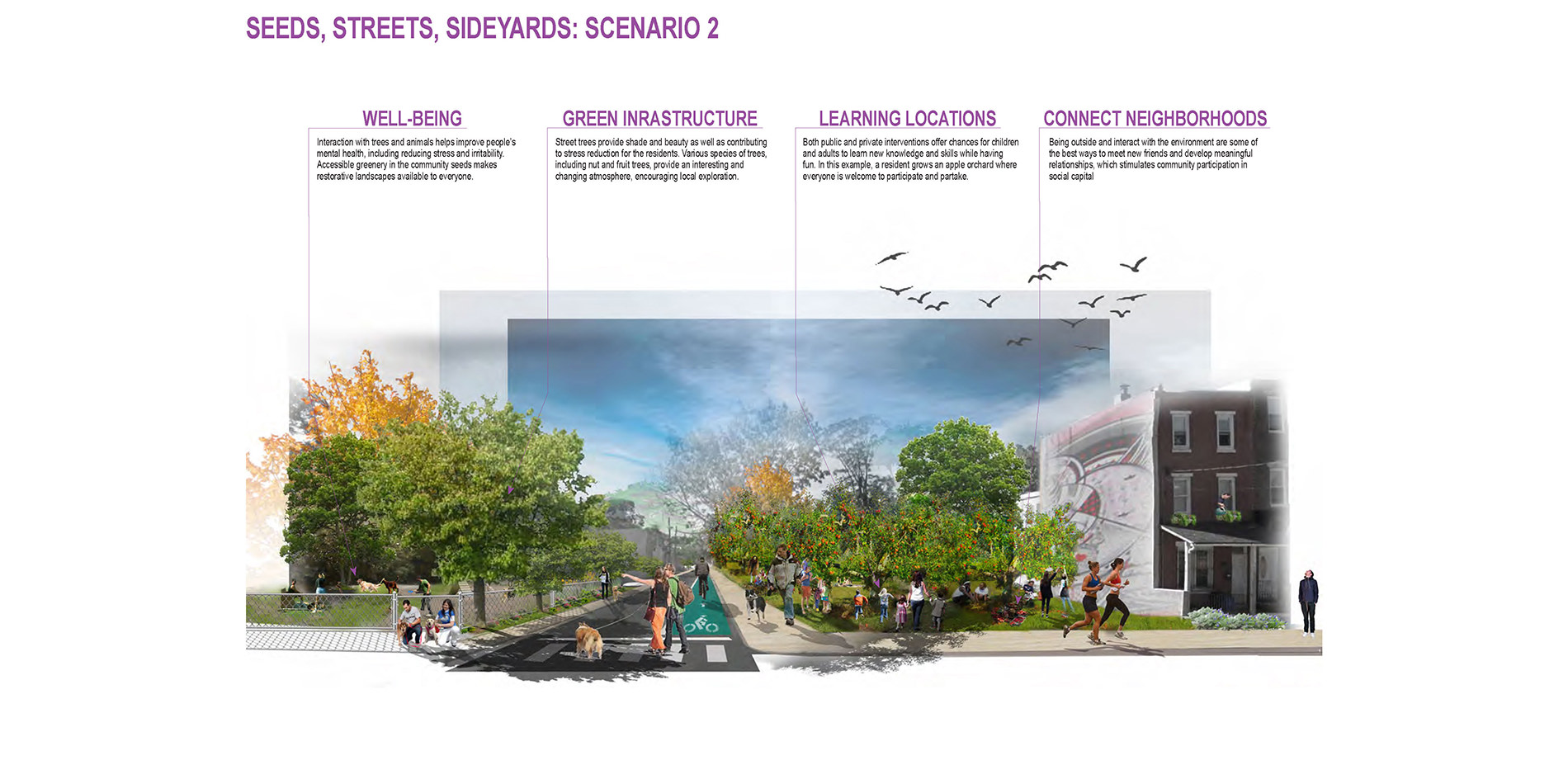
In a resident’s wish, a street corner could turn into an exciting recreational space across the street from a fruit orchard. Their children could exercise freely and have healthy snacks ready when they are hungry.
Photo Credit: Fatemeh Saeidi-Rizi (Vision Design / Perspective Specialist)
Media: Please submit high-resolution image requests to images@asla.org.

If other public transportations are more attractive, people will use cars less. With interactive bus routes, bike lanes, and exciting interests along the way, getting from point A to point B is now more exciting than ever.
Photo Credit: Fatemeh Saeidi-Rizi (Vision Design / Perspective Specialist)
Media: Please submit high-resolution image requests to images@asla.org.
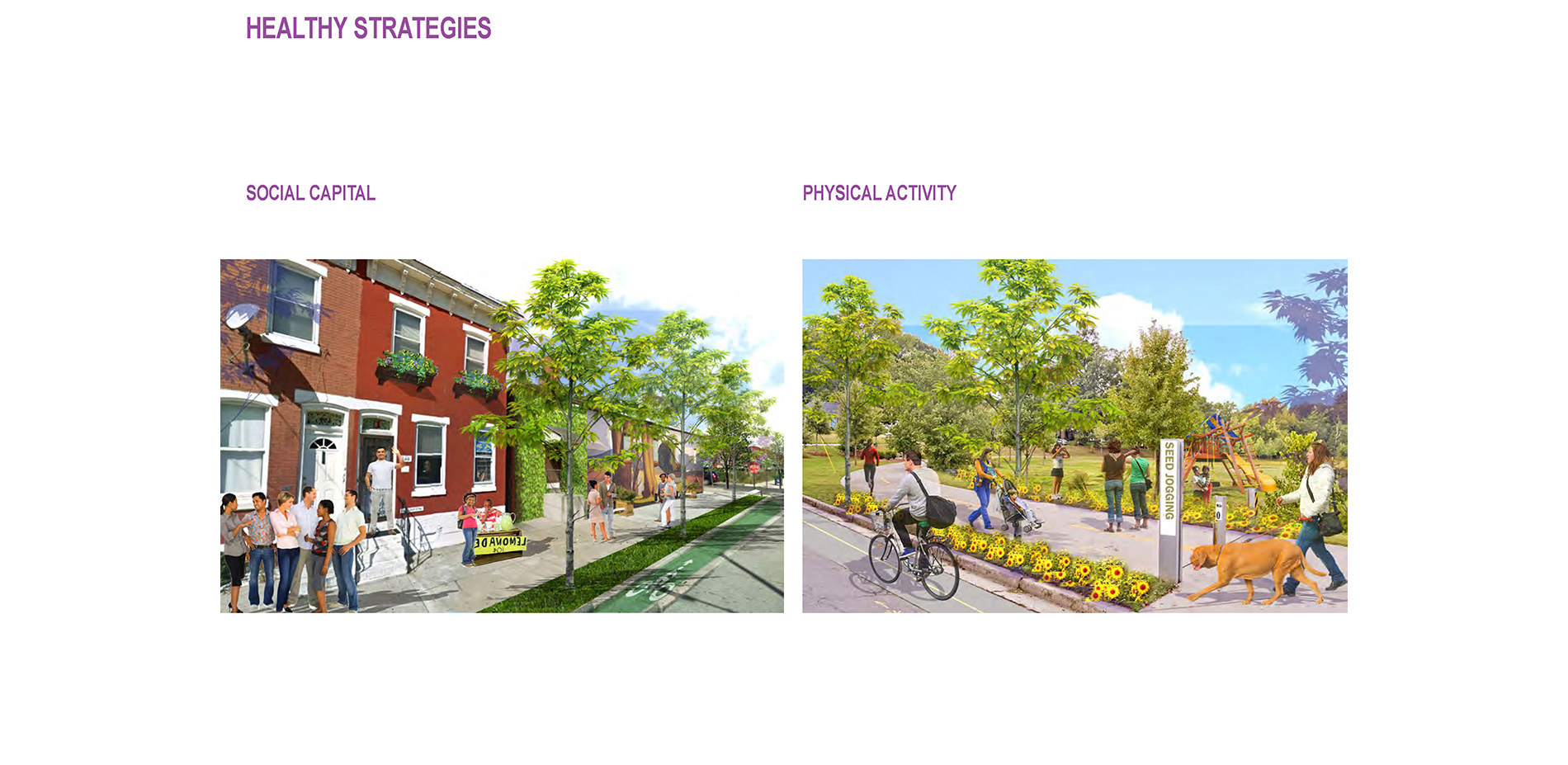
Because health is not solely about physical activity, we provided the opportunity to turn these spaces into socially active environments that allow citizens to reap the full benefits of nearby nature. Trees and flowers provide perfect settings for social encounter.
Photo Credit: Fatemeh Saeidi-Rizi (Vision Design / Perspective Specialist)
Media: Please submit high-resolution image requests to images@asla.org.
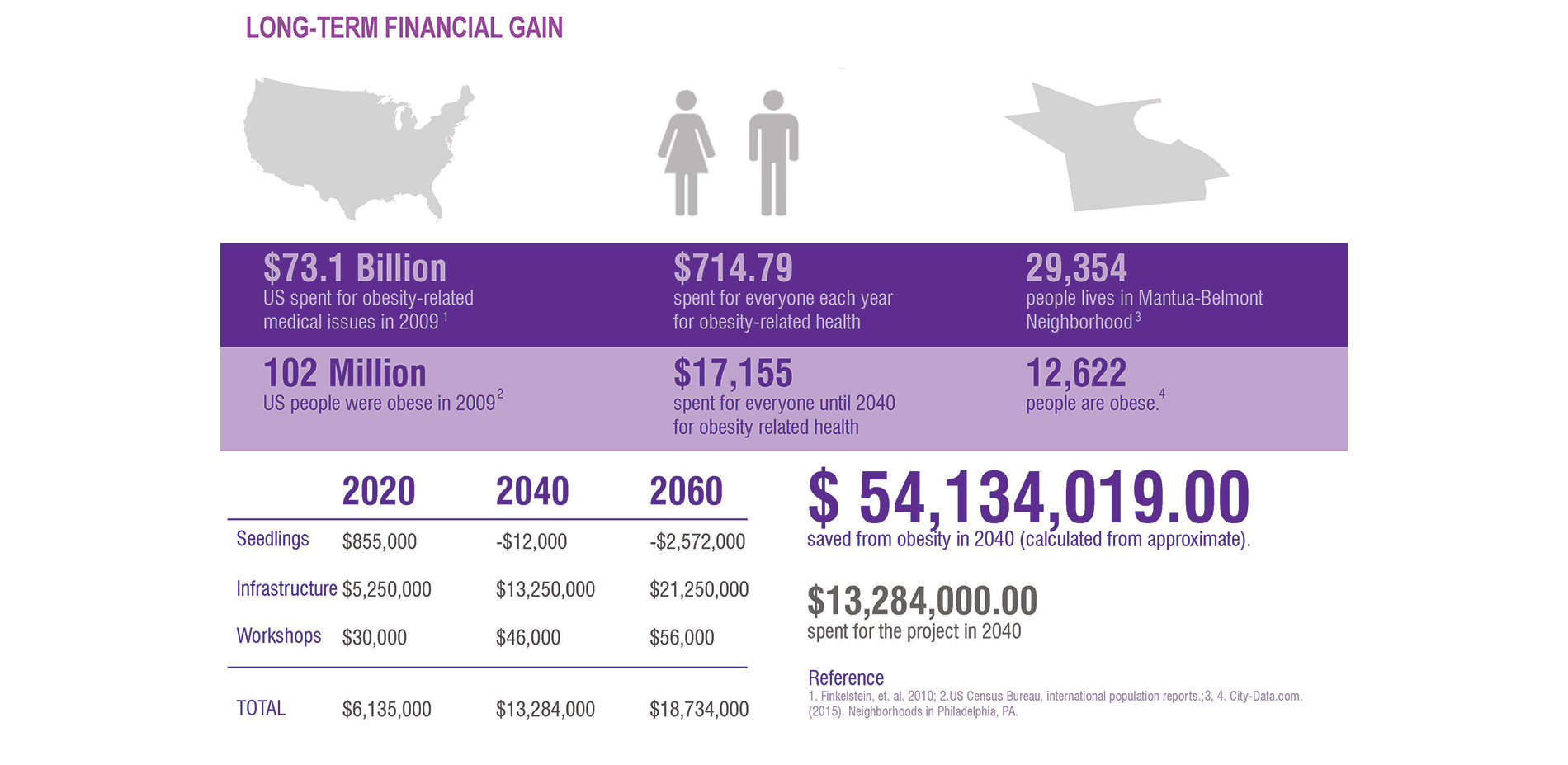
While the budget for this project seems large, the benefits can outweigh the costs. With stronger community and obeso-protective environments we have created, we can save a large amount of money invested for obesity related illness.
Photo Credit: Fatemeh Saeidi-Rizi (Vision Design / Perspective Specialist)
Media: Please submit high-resolution image requests to images@asla.org.

















